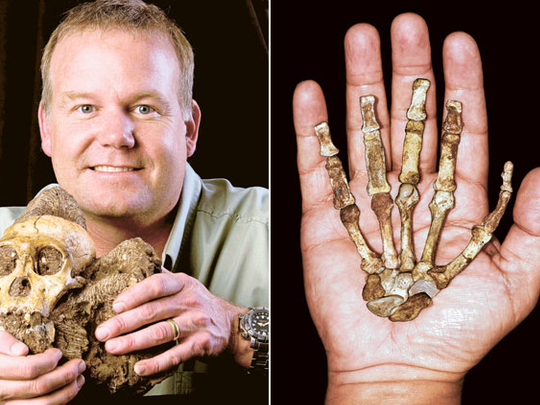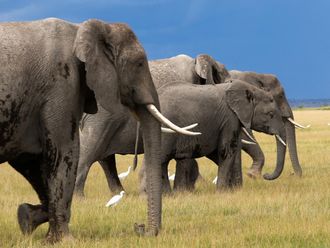
Washington: An analysis of 2-million-year-old bones found in South Africa offers the most powerful case so far in identifying the transitional figure that came before modern humans — findings some are calling a potential game-changer in understanding evolution.
The bones are from Australopithecus Sediba. The research places that pre-human branch of the evolutionary tree as the best candidate to be the ancestor of the human line, said Lee R. Berger of the University of Witwatersrand in South Africa.
The bones, found in 2008 in the fossil-rich cave region of Malapa near Johannesburg, show a head-to-foot combination of features of Australopithecus and the human genus, Homo.
"It's as if evolution is caught in one vital moment, a stop-action snapshot of evolution in action," said Richard Potts, director of the human origins programme at the Smithsonian Institution. He was not among the international research team, led by South African scientists. Their research was published online yesterday in the journal Science.
Scientists have long considered the Australopithecus family, which includes the famous fossil Lucy, to be a primitive candidate for a human ancestor. The new research establishes a creature that combines features of both groups.
The journal published five papers detailing the findings, including separate reports on the foot, hand, pelvis and brain of A. Sediba.
Berger said the brain, hand and foot have characteristics of both modern and early pre-human forms that show a transition under way. It represents a bona fide model that could lead to the genus Homo, Berger said.
Kristian J. Carlson, also at Witwatersrand, said the brain of A. Sediba is small, like that of a chimpanzee, but with a configuration more human, particularly with an expansion behind and above the eyes.
This seems to be evidence that the brain was reorganising along more modern lines before it began its expansion to the current larger size, Carlson said in a teleconference.
"It will take a lot of scrutiny of the papers and of the fossils by more and more researchers over the coming months and years, but these analyses could well be ‘game-changers' in understanding human evolution," according to the Smithsonian's Potts.
So, does all this mean A. Sediba was the "missing link"?
Well, scientists don't like that term, which Berger calls "biologically unsound."
This is a good candidate to represent the evolution of humans, he said, but the earliest definitive example of Homo is 150,000 to 200,000 years younger.
Scientists prefer the terms ‘transition form' or ‘intermediary form', said Darryl J. DeRuiter of Texas A&M University. "This is what evolutionary theory would predict, this mixture of Australopithecene and Homo," DeRuiter said. "It's strong confirmation of evolutionary theory."
But it's not yet an example of the genus Homo, he said, though it could have led to several early human forms including Homo habilis, Homo rudolfensis or Homo erectus — all considered early distant cousins to man, Homo sapiens.












